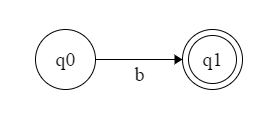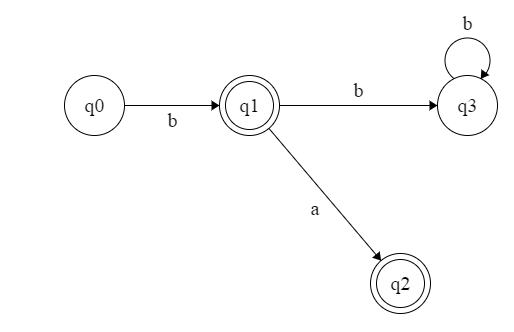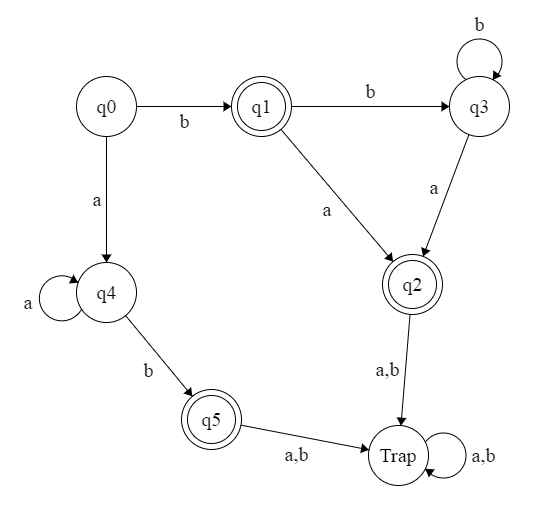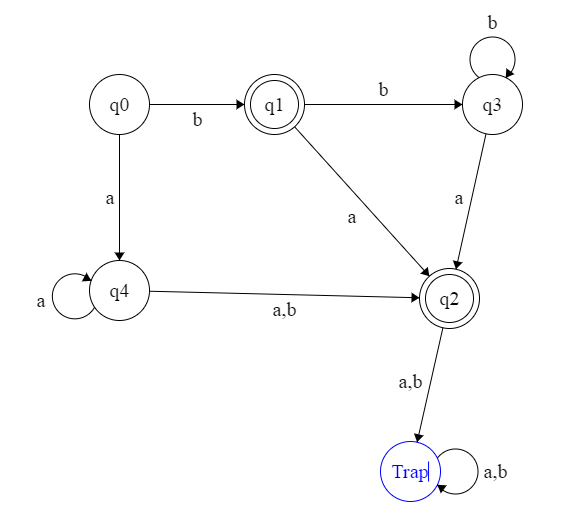I replicated my exact procedure below ! @vijaycs and @saurav please verify any intermediate wrong conclusion if I have done !
L = $\\ \text{regex} = a^{*}b + bb^*a \\ \\ = (\epsilon +aa^*)b+bb^*a\\ \\ = b + aa^*b+bb^*a\\$
- Started with accepting the minimum string 'b' of L

- filling arrows at q1 now,
 On 'a' form q1 we can not loop at q1. q2 is created. q2 becomes ending with 'a' state.
On 'a' form q1 we can not loop at q1. q2 is created. q2 becomes ending with 'a' state.
- still completing arrows at q1
 On reading 'b' from q1 we can not loop at q1, because then $b^n$ will be accepted.
On reading 'b' from q1 we can not loop at q1, because then $b^n$ will be accepted.
- Completing arrows at q3 now.
 Yes we can loop at q3 on reading 'b'.
Yes we can loop at q3 on reading 'b'.
- Still Completing arrows at q3.
 On reading 'a' from q3 send it to ending with a state q2. Btw one more edge has been added on q0. On 'a' from q0 none of the existing states can be reused. So q4 is created.
On reading 'a' from q3 send it to ending with a state q2. Btw one more edge has been added on q0. On 'a' from q0 none of the existing states can be reused. So q4 is created.
- Completing arrows on q4 now.
 Reused q4 on reading 'a' and create new state q5 for 'b'. Mark q5 it as final and call it as ending with b state.
Reused q4 on reading 'a' and create new state q5 for 'b'. Mark q5 it as final and call it as ending with b state.
- Trap state is added from q2 and q5.

- Now I observe for final states that can be merged to a single states.I found q2 and q5 are doing the same thing on similar inputs and going to the same type ( or class ) of state (T)
